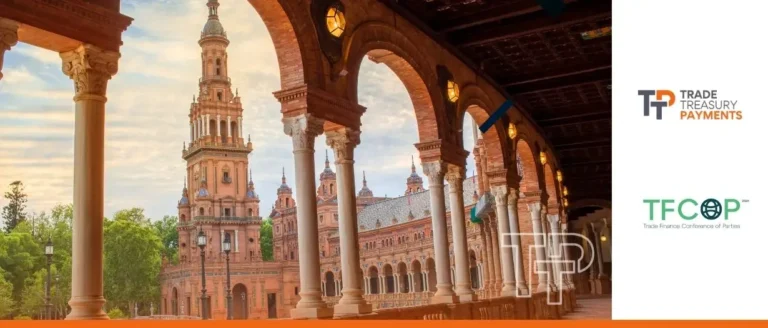Mongolian banks faced a costly setback when major US and European banks withdrew their USD clearing business from the market between 2012 and 2018. As compliance pressures intensified globally, these institutions severed direct correspondent banking relationships with Mongolian counterparts, effectively cutting the country off from access to essential USD clearing services. For a small, trade-reliant economy where around 50% of cross-border transactions are conducted in US dollars, the disruption had consequences well beyond the financial sector.
“The withdrawal of these services posed serious challenges for Mongolian banks,” Unengerel Chuluunbat, Director of the Trade and structured finance department in the International Banking Division of Golomt Bank, told Trade Treasury Payments (TTP). Without direct access to US financial infrastructure, Mongolian banks were forced to route payments through multiple intermediaries, adding complexity and costs to what would otherwise have been relatively straightforward transactions.
The absence of direct USD clearing led to a fragmented payment architecture that put systemic limitations on Mongolia’s ability to engage the global economy.
Recognising these risks early on, the Asian Development Bank’s Trade and Supply Chain Finance Program (TSCFP) began actively working to address the correspondent banking gap in Mongolia. In addition to providing guarantees and loans to support trade, the programme engaged directly with global correspondent banks, such as BNY, to encourage re-engagement with Mongolian institutions like Golomt.

Restoring a lifeline: Golomt Bank and BNY
The process of restoring direct correspondent relationships has taken years. Efforts began in earnest around 2019 but were stalled by the pandemic and shifting geopolitical currents. For Golomt Bank, a breakthrough came in 2024 with the establishment of a correspondent account with BNY.
“Following the exit of US banks from the Mongolian market, local financial institutions have made concerted efforts to re-establish direct correspondent banking relationships with US banks,” Chuluunbat said. “In line with these efforts, we initiated discussions with BNY in 2022. After a thorough process of evaluation and collaboration, a correspondent account was successfully established in 2024.”
The significance of this step is difficult to overstate. Golomt Bank has regained direct access to US clearing infrastructure, which, for businesses reliant on international suppliers, means fewer delays and a better ability to predict what will be coming down the line.
“Since BNY entered the market, the processing of our USD SWIFT payments has become significantly more streamlined,” Chuluunbat added. “This improvement is primarily due to the elimination of intermediary banks that were previously part of the payment chain.”
Angelia Toh, Senior Trade Finance Structurer APAC at BNY, who helped oversee trade finance offerings, confirmed the collaborative nature of the process. “This kind of relationship requires strong mutual understanding and a shared commitment to compliance, transparency, and efficiency,” she told TTP. “We were pleased to work closely with Golomt Bank to establish a stable and sustainable correspondent arrangement.”
Roberto Leva, Relationship Manager of ADB’s Trade and Supply Chain Finance Programme, highlighted the importance of partnership in the process of restoring correspondent banking relationships. “In addition to providing guarantees and loans, ADB’s TSCFP actively re-establishes connections between global and local banks, both regionally and internationally, to help address correspondent banking gaps,” he told TTP. “These efforts are critical to supporting trade diversification and enabling sustainable growth in emerging markets.”
From payment rails to trade finance
The return of direct clearing access has implications beyond day-to-day payments. With the infrastructure now in place, Mongolian banks will be able to enhance their trade finance capabilities and Golomt Bank has already seen concrete results.
“The benefits have extended to our clients as well,” Chuluunbat said. “USD remittance fees charged to our customers have been reduced significantly, by an estimation of 30% to 60%.”
More efficient cross-border payments also create a stronger foundation for trade lending. In 2024, Golomt Bank rejoined the Trade Finance Programs (TFPs) of the Asian Development Bank (ADB) and the International Finance Corporation (IFC). These programmes support banks by sharing risk and facilitating access to global counterparties.
“This strategic move has significantly strengthened our trade finance capabilities, allowing us to offer a broader range of tailored solutions to our clients,” Chuluunbat said. “As a direct result, the bank’s trade loan portfolio has doubled in 2024 compared to the previous year.”
The participation in ADB and IFC programmes has had especially important knock-on effects for smaller businesses, which often face more limited financing options. “The availability of ADB and IFC’s programs has improved financing accessibility for our SME trade finance clients as well, offering more competitive and favourable terms,” Chuluunbat said. “Consequently, our SME trade finance portfolio grew by 5% by the end of 2024.”
One client, operating in the retail market, reported that the loans were instrumental in managing liquidity. “[This client] noted that the interest rate on their trade loans was more favourable than that of other credit lines,” Chuluunbat said.
A wider network and a digital future
In the international banking world, there is a lot of emphasis on relationships and having strong connections in the right places can mean the difference between struggling and thriving.
Toh said, “BNY’s extensive correspondent banking network across key financial centres facilitates faster, more cost-effective international transactions. This connectivity empowers Mongolian banks to expand their reach and better serve clients pursuing global opportunities.”
The global reach that BNY is able to provide for Golomt is amplified by the Mongolian bank’s participation in ADB’s Trade and Supply Chain Finance Program (TSCFP), giving institutions in the country access to a network of 200-300 banks.
“ADB’s TFSCP enabled us to engage with new counterparties more easily, even in the absence of existing correspondent banking relationships,” said Chuluunbat. The expanded network has also led to reduced financing costs, opening new opportunities for trade and export growth.
In late 2024, Golomt Bank launched a digital portal for issuing letters of credit via its e-banking platform.
“We are implementing improved solutions for the delivery of trade finance products and services, focusing on greater efficiency, accessibility, and reduced paper usage,” Chuluunbat said. “We believe this digital solution will significantly improve service accessibility, particularly for clients in rural areas.”
Building from the ground back up
Re-establishing USD correspondent banking in Mongolia is the start of a broader re-integration of the country into the global trade and payments infrastructure. For Golomt Bank and its clients, the transition has already delivered measurable benefits.
While the challenges of fragmented payment networks and regulatory compliance remain present in many markets, Mongolia’s experience shows what is possible with long-term commitment and institutional collaboration. “Golomt Bank remains committed to being a leading player in supporting the growing demands of the trade sector,” Chuluunbat said.
With proper infrastructure, partnerships, and policy support, Mongolia is laying the groundwork for an inclusive financial future.



